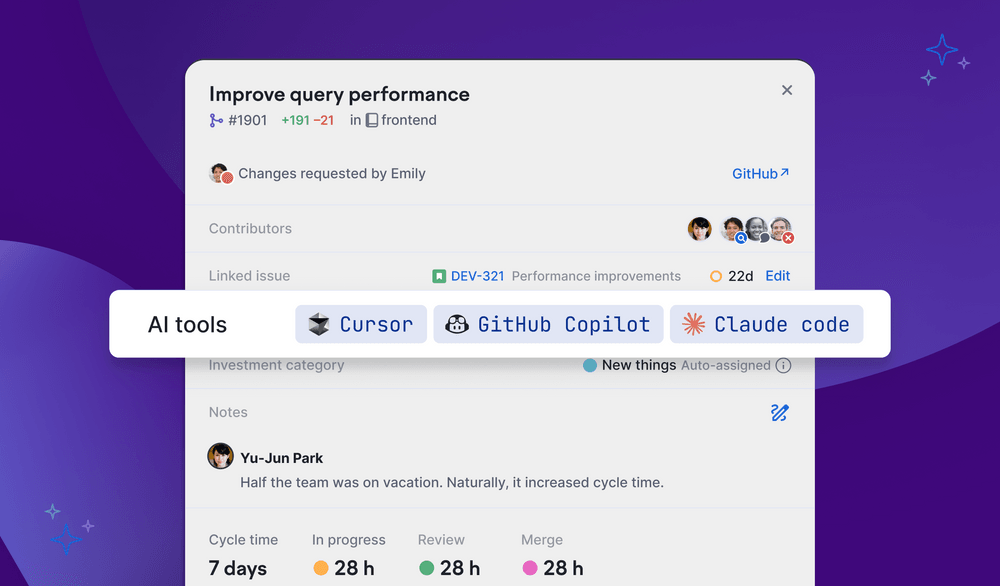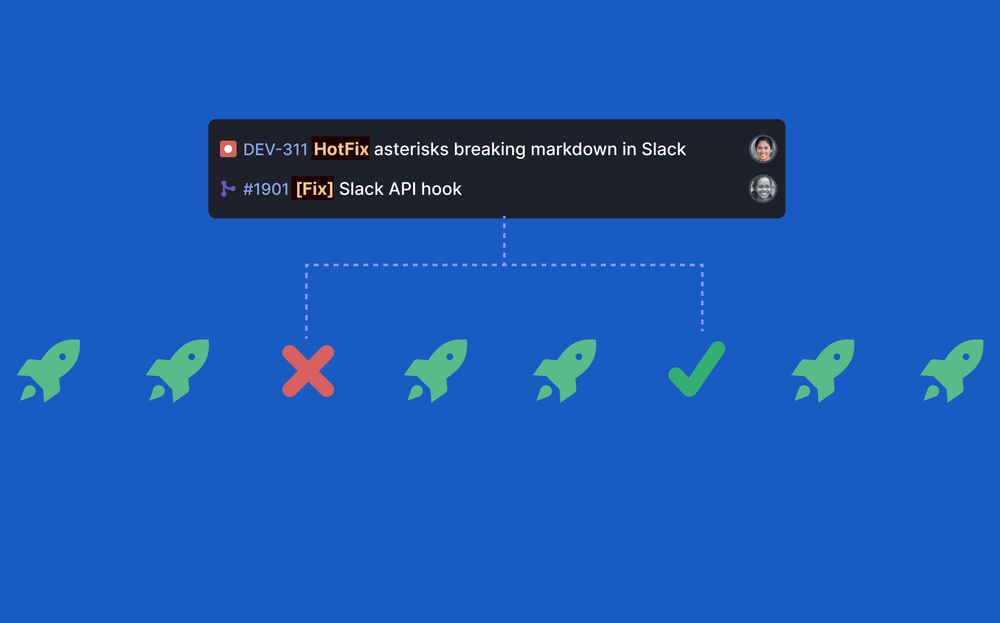
Define hotfixes with pull request and issue filters for more accurate change failure metrics
Change failure rate and mean time to recovery are two of the four key DORA metrics, helping you understand how often your deployments cause problems in production and how quickly you can restore service when failures occur. A high change failure rate usually means your release process needs work — but measuring it accurately can be tricky.
Now you can use pull request and issue filters to define what counts as a hotfix in Swarmia. This gives you more control over change failure rate calculations and helps ensure the metric reflects your team’s actual fix patterns.
How it works
Configure filters that match either pull requests or issues (based on title, labels, or custom fields). When a deployment includes a PR or issue that matches your configured filter, Swarmia considers the related deployment as a fix. When a deployment contains a hotfix (based on your filters), Swarmia automatically marks the previous/matching deployment as a change failure.
This approach works well for teams that already use consistent conventions for tracking fixes — like prefixing hotfix pull requests with “hotfix:” or using specific labels like “bug” or “urgent-fix.” Read more about automatic hotfix detection.
Getting started
You can now configure these filters directly in the UI. Navigate to Settings → Deployments → Hotfix detection to set up your pull request and issue filters.
Subscribe to our newsletter
Get the latest product updates and #goodreads delivered to your inbox once a month.
More changelog updates



